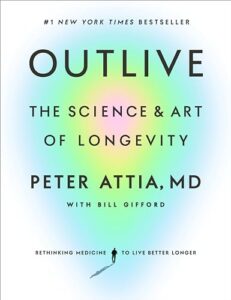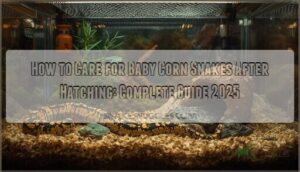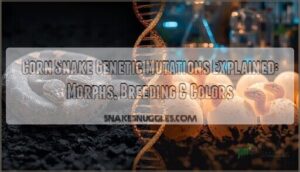This site is supported by our readers. We may earn a commission, at no cost to you, if you purchase through links.

Long after the lights go out and the quiet hum of a terrarium fills the room, your corn snake’s potential for a long, healthy life takes shape behind the scenes. Every detail—from subtle temperature swings to the rhythm of their daily routine—leaves its mark, for better or worse.
Genetics may set the stage, but the factors affecting corn snake lifespan play out in real time, shaping each year together. With attentive care and a keen eye for nuance, you can help these gentle snakes thrive well beyond what most expect, turning ordinary days into the foundations of a surprisingly lengthy life.
Table Of Contents
- Key Takeaways
- Key Factors Affecting Corn Snake Lifespan
- Genetic Influences on Longevity
- Environmental Conditions and Lifespan
- Enclosure Setup and Maintenance
- Diet and Nutrition Essentials
- Impact of Stress and Handling
- Common Health Issues Reducing Lifespan
- Importance of Regular Veterinary Care
- Tips for Extending Corn Snake Lifespan
- Top Products for Corn Snake Longevity
- Frequently Asked Questions (FAQs)
- Conclusion
Key Takeaways
- Consistent enclosure conditions—such as stable temperatures, proper humidity, and good lighting—are critical to your corn snake’s long-term health and lifespan.
- Genetics and responsible breeding directly influence your corn snake’s risk for inherited disorders and overall longevity.
- Regular veterinary checkups and prompt attention to health issues like respiratory infections, mites, and shedding problems can prevent early death.
- Stress reduction through gentle handling, environmental enrichment, and routine care is essential for keeping your corn snake healthy and thriving for years.
Key Factors Affecting Corn Snake Lifespan
Several key factors play a part in how long your corn snake lives and thrives. Understanding these can make a real difference for your pet’s health and longevity.
Knowing the key factors that affect your corn snake’s life can make all the difference for its health and longevity
Let’s look at the main influences you’ll want to keep in mind.
Sustainable Energy Solutions
Even if you wouldn’t expect it, thinking about sustainable energy solutions ties directly into the factors affecting corn snake lifespan in captivity. Reliable temperature gradients, efficient lighting, and stable habitat conditions—all shaped by renewable adoption, energy efficiency, and creative storage—can extend your snake’s life. The global market is projected to reach $136,170 million by 2025.
Consider these essentials:
- Stable lighting from energy-efficient sources
- Consistent temperatures from reliable systems
- Reduced carbon emissions benefiting long-term care
- Market growth in reptile-safe technologies
Global Warming Impact
Reliable energy aids corn snake care, but global warming complicates the picture. Shifts in temperature and humidity disrupt brumation, shorten lifespans, and trigger earlier spring migrations—sometimes up to 15 days ahead.
These environmental changes bring greater physiological stress, reduced reproductive success, and push populations to migrate, threatening both survival rates and the stability of corn snake habitats over time. Corn snakes thrive in southeastern United States.
Innovative Climate Policies
Given the environmental factors influenced by climate, policy effectiveness matters for corn snake habitat. When technological advancements and financial incentives lead to greener energy in your region, you see steadier environmental conditions—less extreme swings that benefit your corn snake’s lifespan.
Global cooperation and public acceptance of these policies often trickle down to the smallest habitats, quietly supporting factors affecting lifespan.
Genetic Influences on Longevity
Genetics shape more than just your corn snake’s color—they can set the stage for a healthy, long life or lead to potential challenges. Some inherited traits and breeding choices can really make a difference in how long your pet thrives.
Let’s look at what genetic factors matter most.
Inherited Disorders and Health Risks
Genetic predispositions can steer your corn snake’s health in unexpected directions. Some morph-specific risks, like spinal deformities in lavender morphs or ocular abnormalities in palmetto snakes, illustrate how genetic mutations influence wellness.
Reproductive challenges and subtle genetic issues remind you that genetic quality and, increasingly, genetic screening, are critical in identifying health risks that may shorten a snake’s lifespan.
Responsible Breeding Practices
When you prioritize responsible breeding practices, you give your corn snakes the best odds for a long, healthy life. Established breeders wait for the right breeding age, maintain genetic diversity through careful recordkeeping, and conduct thorough health screenings.
By limiting breeding volume and selecting only viable hatchlings, you help promote genetic quality—boosting hybrid vigor while minimizing risks from genetic mutations.
Morph Variations and Lifespan
Not every corn snake morph carries the same baggage. Most morphs thrive just as long as wild types if you provide proper care. Still, breeding intensity can shape genetic predispositions, and rare morphs sometimes face health issues, especially in hybrids.
Ongoing morph research hints that genetics matter, but stable captive lifespan trends usually win out when you stay alert with genetic screening and routine care.
Environmental Conditions and Lifespan
Environmental conditions can shape every chapter of your corn snake’s life. The right setup makes the difference between just surviving and truly thriving.
Here’s what you should consider when designing a healthy home for your snake.
Temperature Gradients and Regulation
Think of your corn snake’s enclosure as a carefully woven patchwork quilt—each section with a purpose. Smart temperature gradients let your snake self-regulate, from the Basking Temperature (85–90°F) to a Cool Zone (75–82°F).
For success, use:
- Digital thermometers
- Quality thermostats
- Heat lamps
- Daily checks
- Seasonal tweaks for Winter Brumation
Balance is everything in thermoregulation.
Humidity Control and Shedding
Ever notice flaky scales or rough patches after snake shedding? Inconsistent humidity levels spell trouble for your corn snake. Aim for 40–60% humidity, but boost it during Shedding Frequency spikes.
Humid Hides and careful Humidity Measurement are your allies—use misting techniques for fast relief. Proper humidity regulation is your main line of defense against dysecdysis prevention and shedding difficulties.
Lighting and Photoperiod
Lighting does more than just brighten a corn snake’s world—it helps regulate everything from stress to healthy bone growth. Aim for a stable day-night cycle, using LED lighting plus consistent UVB exposure for vitamin D3 synthesis.
Seasonal lighting shifts mimic the natural environment, while full-spectrum lamps and proper UVB lighting help minimize stress, supporting overall health and longevity.
Enclosure Setup and Maintenance
Setting up the right home for your corn snake is one of the most important choices you’ll make. The way you design and care for the enclosure shapes your snake’s comfort and overall health.
Let’s look at your main options to help you create the perfect setup.
Ideal Enclosure Size by Age
Choosing the ideal enclosure size by life stage is essential for your corn snake’s well-being. Hatchling enclosure needs start small, but upgrades are important as your pet grows.
- Hatchlings: 12″x8″x3″
- Juveniles: at least 24″x12″x12″
- Adults: minimum 48″x24″x24″
- Growth-based upgrades prevent stress
- Welfare-based enclosures match natural behaviors
Ventilation and Cleanliness
As your corn snake grows, maintaining a clean habitat becomes paramount. Proper vivarium ventilation and consistent cleaning routines keep disease in check, reducing risks like respiratory infections.
Airflow importance can’t be overstated—mesh lids or side vents help stabilize humidity and discourage pathogens.
Weekly cleaning frequency, thorough disinfection methods, and mindful hygiene impact all work together, shaping a healthier, longer-living snake.
Best Substrate Options
After tackling ventilation and cleanliness, it’s time to look at substrate options. Aspen bedding is popular, but coconut husk and cypress mulch outperform it for moisture retention and supporting natural burrowing behavior.
Mixing substrates often improves humidity and hygiene practices. For those wanting low-maintenance, bioactive substrates combine moisture control with enrichment, helping create a healthier, more natural environment for your snake.
Diet and Nutrition Essentials
When it comes to keeping your corn snake healthy for years to come, what you feed and how you feed matters just as much as their setup. The right diet bolsters everything from growth to immune health.
Let’s take a closer look at the key details every owner should know.
Appropriate Prey Size and Type
Getting prey size right is non-negotiable for your corn snake’s health. Stick with prey size guidelines: each meal should be 1 to 1.5 times your snake’s mid-body width—nothing wider, and always under 10% of their body weight.
Rely on rodents like frozen–thawed mice, adjusting prey type and size as your snake matures, to prevent digestive trouble and nutritional gaps.
Feeding Frequency and Schedules
Once you’ve sized prey, lock in your feeding frequency. Age-based intervals matter—a hatchling eats every 5–7 days, adults stretch to every 10–14. Ignore “power feeding” hype; it only risks obesity and shortens life.
Make seasonal adjustments and always monitor body condition. Regular fasting, with close observation, can actually benefit diet, metabolism, and long-term nutritional balance.
Nutritional Supplements and Balance
Across your snake’s life, nutritional supplements play a subtle—but essential—role. Dial in calcium needs and Vitamin D3, especially when UVB is missing, to maintain mineral balance and prevent bone weakness.
Watch for over-supplementation risks; excess vitamins or improper prey quality upset nutritional balance. Matching supplements to diet and feeding frequency protects against obesity and your snake’s long-term health.
Impact of Stress and Handling
How you handle your corn snake and shape its day-to-day life makes a bigger difference than you might think. Tiny stressors can add up over time, quietly chipping away at your snake’s health.
Here’s what to think about when setting up your pet’s environment and routines.
Effects of Improper Handling
Ever wonder why your corn snake suddenly resists handling? Improper handling sparks defensive bite incidence and temperament modification, while stress physiological effects—like rapid breathing or hiding—reveal real distress.
Handling at the wrong time disrupts feeding and digestion, leading to regurgitation or refusal to eat. These stressors, repeated over time, pose serious lifespan health risks and reduce your snake’s well-being.
Importance of Enrichment and Hiding Spots
When your corn snake’s enclosure includes both environmental enrichment and plenty of hiding spots, you’re giving it more than comfort—you’re fueling cognitive benefits, supporting stress reduction, and boosting activity levels.
These upgrades offer real improvements in social development and long-term health correlations, creating a more natural, secure environment and laying the groundwork for your snake’s wellbeing.
Reducing Environmental Stressors
Think about stress like ripples in a pond—just a little noise or vibration can spread far and wide. Your job? Calm those waters. Keep your snake’s world steady with:
- Noise control and vibration reduction for calm days and nights
- Stable light cycles and proper enclosure placement for routine
- Regular air quality checks, temperature gradients, hiding spots, and reliable humidity control
Common Health Issues Reducing Lifespan
Corn snakes face a handful of health concerns that can quietly shorten their lives if left unchecked. Knowing what to watch for puts you in a stronger position to keep your snake healthy.
Here are some common issues every keeper should recognize.
Respiratory Infections and Symptoms
A persistent wheeze or bubbles around your corn snake’s mouth isn’t just a nuisance—it’s often an early sign of respiratory infections, one of the most common health issues in snake care. Identifying infection prevalence, knowing pathogen types, and understanding clinical signs is essential. Diagnosis methods and appropriate treatment options depend on fast veterinary care.
| Clinical Sign | Description |
|---|---|
| Bubbly Saliva | Indicator of infection |
| Wheezing | Common symptom |
| Open-mouth Breathing | Severe respiratory distress |
| Appetite Loss | Early warning sign |
Mites, Parasites, and Prevention
Mites creep in quietly but can upend your snake’s health in weeks—infestations reach up to 65% in collections. For disease prevention and effective control, remember:
- Screen new arrivals (quarantine is key)
- Monitor for mite prevalence
- Address parasite burdens promptly
- Use proven environmental control products
- Prioritize regular veterinary care to maintain treatment efficacy and halt transmission.
Shedding Problems and Dehydration
Just as parasites can unsettle your snake’s routine, shedding difficulties often signal deeper snake health problems. When humidity drops below healthy snake humidity levels, you’ll see stuck sheds and dented eye caps—a warning flag for dehydration.
Prevention strategies include maintaining proper humidity and monitoring shedding frequency. Left untreated, these issues can escalate, impacting organ health and trimming years from lifespan.
Importance of Regular Veterinary Care
Regular check-ins with a qualified reptile vet are key to keeping your corn snake thriving. These visits can catch small issues before they become big problems.
Here are the most important reasons why routine veterinary care matters.
Preventive Health Checks
Annual checkups with a reptile veterinarian are a cornerstone of snake health, revealing subtle issues—like subclinical illnesses or nutritional deficiencies—long before they become visible. These Exam Key Components support disease prevention and boost lifespan considerably.
While owner compliance rises with education, barriers to care remain: cost, access, and awareness all shape how often preventive veterinary care protects your corn snake.
Early Detection of Illness
Spotting Observable Symptoms—like incomplete sheds, changes in appetite, or unusual behavior—can mean the difference between a minor setback and major trouble for snake health. Owner Monitoring is your first line of Early Intervention.
Quick action, guided by Diagnostic Methods and Reporting Trends, ensures snake health stays ahead of common health issues and disease prevention remains effective through attentive veterinary care.
Finding a Qualified Reptile Vet
You’re watching for subtle shifts in your corn snake—now, finding a qualified reptile vet is your next step. Vet accessibility often depends on your location; urban dwellers usually have more options than those in rural areas.
Tap into referral networks and always ask about certification verification. While cost barriers can be real, regular veterinary checkups help prevent expensive emergencies in reptile health care.
Tips for Extending Corn Snake Lifespan
If you want your corn snake to live a long, healthy life, a few small habits make a big difference. It’s not just about the right food or a clean tank—it’s paying attention to the little things. Here’s what to focus on for the best results.
Monitoring Body Condition and Weight
Think of weight monitoring as your early warning system—catching issues before they’re visible. Regular BCS assessment using palpation techniques lets you spot obesity or malnutrition early. Small weight fluctuations are normal, but sudden changes signal trouble.
Rely on clinical measurements and make feeding adjustments as needed. Careful body condition tracking helps prevent obesity and keeps your corn snake thriving, year after year.
Creating a Stable Routine
Consistency is your secret weapon for a thriving corn snake. Feeding consistency, hydration schedule, and lighting timing all shape behavioral stability and metabolic health. Stick to a consistent feeding routine, refresh water daily, and check enclosure maintenance regularly.
Environmental enrichment and gentle handling reduce stress, while steady routines support natural behaviors—ultimately helping you monitor weight and extend your snake’s healthy years.
Recognizing Signs of Aging
How can you tell your corn snake is entering its golden years? You’ll notice subtle color fading and scale discoloration, a drop in activity, and feeding changes—sometimes meals are skipped or digested more slowly. Less elastic skin, changes in appearance, and slight behavioral shifts all point to aging.
These physical indicators echo what’s observed in the oldest corn snake cases.
Top Products for Corn Snake Longevity
Choosing the right products can make all the difference in your corn snake’s health and lifespan. From lighting to supplements, there are options designed to support every stage of care.
Here are some top picks to help your snake thrive.
1. Reptispa LED UVB Reptile Lamp
Ever wonder how your corn snake’s health ties into modern lighting? The Reptispa LED UVB Reptile Lamp stands out for its UVB LED benefits, supporting vitamin D3 synthesis for bone health and immune balance.
Spectral output analysis reveals reliable coverage at prime wavelengths, but routine lamp maintenance—like checking intensity and replacing after 2,000 hours—keeps your environmental control on track.
Safety considerations matter: regulated LED lighting ensures you’re supporting your snake’s needs, helping you manage the environmental impact on snakes and safeguard longevity.
Best For: Reptile keepers looking for an energy-efficient UVB solution to support the bone health and well-being of species like corn snakes, bearded dragons, and geckos in bioactive enclosures.
- Combines UVA, UVB, and white LEDs for complete spectrum synergy and vitamin D3 support.
- Energy-saving, mercury-free, and designed for long operational life.
- Compact with stable UVB output, ideal for various terrarium setups.
- Limited to a 2,000-hour lifespan before requiring replacement.
- Does not produce heat, so must be paired with a separate heat source.
- May not suit every reptile species; UVB output needs regular monitoring for safety.
2. Lifespan Equine Herbal Anti Inflammatory
Imagine giving your corn snake the kind of proactive care racehorses get. Lifespan Equine Herbal Anti-Inflammatory, while designed for equine joint health, highlights how botanicals such as Boswellia and turmeric target swelling and support longevity.
Clinical efficacy in horses—with minimal side effects—offers a blueprint for those seeking safer alternatives in captivity. Follow dosage recommendations carefully, and always consult your vet.
Effective genetics and health monitoring, combined with sophisticated veterinary care, remain central to extending corn snake lifespan safely and naturally.
Best For: Horse owners looking for a natural, vet-preferred supplement to support joint health, ease inflammation, and improve mobility—especially for horses struggling with stiffness, puffy legs, or those sensitive to traditional NSAIDs.
- Reduces joint, tendon, and ligament inflammation using proven botanical ingredients.
- Supports comfortable movement and recovery in active, aging, or injured horses.
- Minimal side effects compared to NSAIDs, with antioxidant extras supporting skin, coat, and immune health.
- Some horses may dislike the apple flavor or herbal scent and refuse the powder.
- High price tag with no guarantee of results for every horse.
- Occasional reports of shipping delays and rare digestive sensitivity at above-recommended doses.
3. Lifespan Telomere Effect How Not Die
What if you could peek inside your corn snake’s DNA to glimpse its true biological age? Telomere length offers that window, woven tightly with genetics, caloric restriction, and antioxidant strategies that extend corn snake lifespan.
Somatic telomerase, the enzyme that helps repair telomeres in reptiles, slows population aging and proves why factors affecting corn snake longevity aren’t just skin-deep.
Attention to genetic influence on lifespan—along with the right diet and care—stretches those years in your care just a bit further.
Best For: Anyone curious about the science of aging, wanting practical tools to boost their health, or reptile keepers interested in the genetic secrets behind longevity.
- Offers clear, research-backed advice for extending life and improving well-being.
- Explains complex telomere science in a way that’s easy to relate to reptile care.
- Combines actionable nutrition and lifestyle tips with insights from respected health books.
- Some buyers got paperbacks instead of hardcovers, and missing books have been reported.
- Product descriptions and what’s actually shipped aren’t always consistent.
- Font size can be small, making it tough for some to read comfortably.
4. The Life Span Human Development
How do human aging theories and developmental milestones relate to your corn snake’s lifespan? Textbooks on life span human development help you connect dots between cognitive changes, social contexts, and the realities of lifespan inequality.
In captivity, your choices matter just as much—consistent veterinary care, stable routines, and meeting each stage’s needs nurture both snake health and longevity. Monitoring these developmental shifts, much like you’d for a person, transforms your approach and maximizes your corn snake’s years by your side.
Best For: Students and professionals in education, counseling, or social work who need a detailed but accessible resource on human development from birth to old age.
- Covers the latest research, trends, and real-world applications for helping professionals.
- Explores influences like stress, media, and culture, with practical vignettes and visual aids.
- Offers a thorough look at developmental stages and theories across the lifespan, supporting evidence-based practice.
- Expensive, with some buyers noting a high price tag.
- May not be assigned in every academic program, limiting required use.
- Bulky and heavy, making it less portable for daily use.
5. Outlive The Science Of Longevity
Building on developmental milestones, Longevity Science takes things further by focusing on Proactive Health. Outlive: The Science of Longevity isn’t just about people—it’s a practical guide to understanding how Genetics, Environmental factors, and Health conditions interact for longer, healthier lives.
For corn snake enthusiasts, this science-backed approach reveals why consistent routines, balanced diets, and attention to Metabolic Health and Emotional Wellbeing can dramatically boost snake longevity, helping your corn snake thrive well beyond expectations as innovations in Emerging Technologies evolve.
Best For: Anyone who wants a science-based, personalized plan to live longer and reduce chronic disease risk.
- Offers practical, actionable advice on exercise, nutrition, sleep, and mental wellbeing.
- Helps readers create a tailored health strategy backed by the latest research.
- Highlights breakthrough technologies and interventions shaping the future of longevity.
- Some sections can feel dense or technical for readers new to medical science.
- Exercise and screening recommendations may be hard to follow for those with limited time or resources.
- Readers looking for brand-new dietary advice may find some nutrition tips familiar.
6. Lifespan and 12 Rules Collection
If you’re keen on longevity insights that extend beyond the terrarium, the Lifespan and 12 Rules Book Collection offers perspective on living a healthier life—whether you’re dealing with corn snake lifespan in captivity or considering your own health habits.
These thoughtfully paired books highlight how lifestyle changes and awareness of environmental factors shape the well-being of both keepers and their snakes.
Suitability varies, as some readers may prefer practical tips over technical depth, but genetic predispositions and daily routines both find a place in these pages.
Best For: Anyone curious about longevity, self-improvement, or how environment and lifestyle affect the health of both people and their pet corn snakes.
- Pairs breakthrough science with practical advice for healthier lives—human and reptile alike.
- Suitable for readers interested in recent research, wellness, and actionable tips on longevity.
- Encourages a holistic look at health, covering both genetic and lifestyle influences.
- Some may find the science explanations too technical or, conversely, not detailed enough.
- Not every book or guideline will feel relevant to all readers or all types of pet owners.
- Possible issues with order completeness or hardback availability could impact the buying experience.
7. Life Span Human Development Textbook
If exploring the roots of long life fascinates you, the Life Span Human Development textbook makes a useful benchmate. While built for students, its clear breakdown of development domains, nature versus nurture, and major lifespan stages helps put professional applications—for humans and animals—into perspective.
You’ll spot connections between theoretical perspectives and hands-on corn snake care: how genetics, diet, and routine veterinary care shape well-being in captivity. Apply these insights, and your approach gains a deeper, evidence-based foundation.
Best For: Students and professionals who want a clear, research-based guide to human development across all ages.
- Up-to-date insights on biological, cognitive, and psychosocial development, with straightforward language.
- Useful for psychology, counseling, and human development courses, with applications for both academic and professional practice.
- Includes MindTap digital resources for interactive learning anywhere.
- The price ($83.37) may be high for some budgets.
- Not necessarily the latest edition, so newer research could emerge.
- Buying new offers consistency, but used copies might vary in quality.
8. Development Through the Lifespan Book
A reference book like Development Through the Lifespan delivers a wide-angle view that mirrors the complexity of corn snake longevity. Its Lifespan Coverage, from early achievements to aging, highlights how genetics, environmental factors, and health issues weave into every stage of life.
The integration of Multicultural Data and Theoretical Frameworks gives depth to achievement attainments and contemporary issues, reminding you that understanding change—whether in humans or your corn snake—requires looking at the big picture, not just the daily details.
Best For: Students and instructors seeking a comprehensive, research-based introduction to human development across the lifespan, with an emphasis on multicultural perspectives.
- Integrates up-to-date research, milestone tables, and practical applications for real-world understanding.
- Strong multicultural and cross-cultural focus supports a global, inclusive view of development.
- Covers physical, cognitive, emotional, and social changes from prenatal through end-of-life.
- Digital version may be poorly formatted and challenging to read for some users.
- Dense, information-rich content can be overwhelming and hard to absorb quickly.
- Some copies may arrive with wear, tear, or previous owner markings.
Frequently Asked Questions (FAQs)
Can corn snakes live together in the same enclosure?
Corn snakes aren’t naturally social, so cohabitation risks like disease transmission, stress factors, and resource competition can outweigh benefits.
Expert opinions and behavioral changes make solo enclosure setup the best practice for stress reduction and healthy environmental conditions.
How do seasonal changes affect corn snake lifespan?
Seasonal changes shape a corn snake’s daily rhythm—brumation slows everything down, while temperature fluctuations, photoperiod impacts, and humidity variations test their resilience.
Without careful adjustment, these environmental conditions can trigger shedding problems, respiratory infections, and ultimately shorten lifespan.
Are certain medications harmful to corn snakes?
Worried about your snake’s safety during treatment? Certain medications can be very harmful to corn snakes.
For example, acetaminophen is deadly, NSAID sensitivity varies, lidocaine carries risks, and improper antibiotics or drug metabolism issues demand expert reptile veterinarian oversight.
How does frequent relocation affect corn snake health?
Frequent relocation inflicts relocation stress on corn snakes, triggering immune suppression, behavioral changes like increased hiding, and decreased feeding.
These shifts—not just environmental conditions—can lower growth rates, reduce survival rates, and threaten long-term health without proactive stress reduction.
Conclusion
Investigate the truth of a theory to create a memorable impression. Every corn snake’s story is shaped by a web of choices and environmental subtleties more complex than meets the eye.
When you understand the factors affecting corn snake lifespan, you become the architect of their environment and well-being. A gentle routine, proper nutrition, and attention to habitat aren’t minor details—they’re the foundation of extra years, making you not just a keeper, but a steward of their longevity.
- https://www.cabidigitallibrary.org/doi/full/10.1079/cabicompendium.84655
- https://pmc.ncbi.nlm.nih.gov/articles/PMC2527626/
- https://www.pnas.org/doi/10.1073/pnas.2003724117
- https://www.sciencedirect.com/science/article/abs/pii/S0168159121002227
- https://talis-us.com/blogs/news/adult-corn-snakes-a-guide-to-caring-for-adult-corn-snakes

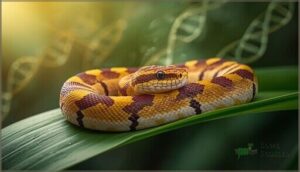
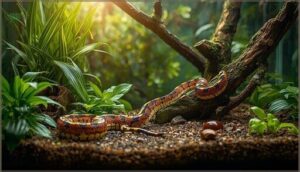

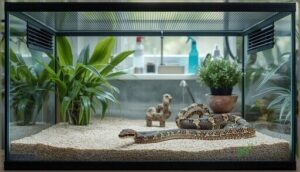
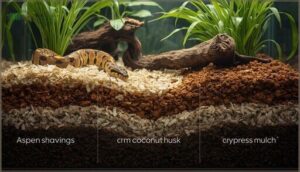
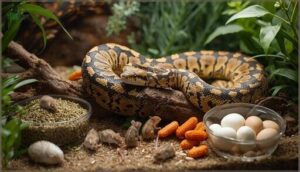
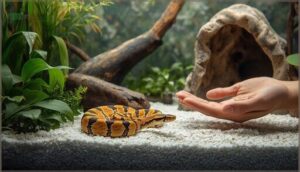
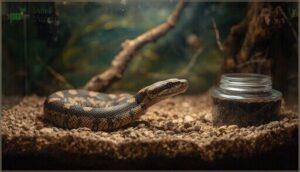

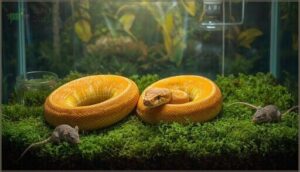
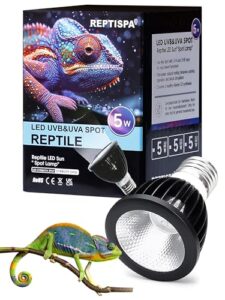

![Lifespan [Hardcover], The Telomere Effect, 9123906057](https://snakesnuggles.com/wp-content/uploads/2025/11/lifespan-hardcover-the-telomere-effect-9123906057-300x300.jpg)

